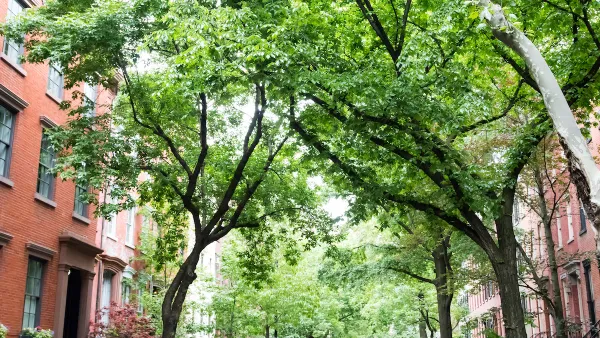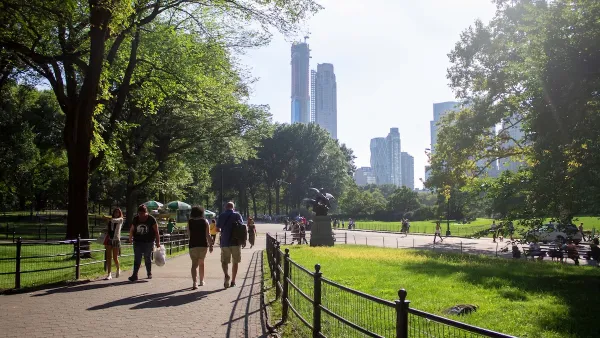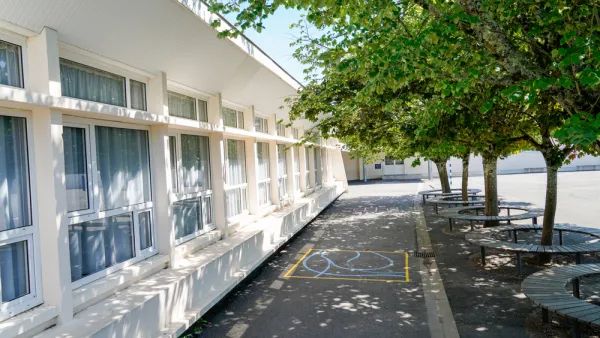New research shows that people are likely to walk more in places that are both walkable and green.

A new study from North Carolina State University reveals that people who spend time in walkable, green neighborhoods engage in more physical exercise. As reported by Megan Skrip for NC State University News, “The analysis, led by former NC State postdoctoral scholar Oriol Marquet, used wearable sensors and satellite data to link people’s activity levels with the walkability and greenness of where they spent their time.” While unsurprising, these findings indicate that coordinated improvements to pedestrian infrastructure and green spaces can improve public health. According to study co-author Aaron Hipp, “It’s unfortunately rare to live or work in a neighborhood that has the walking infrastructure like sidewalks, destinations like a spot for lunch, and are green and shaded. This work again supports that the best environments have all three.”
“The new findings suggest that having opportunities to walk between home, work and other destinations is likely to boost physical activity, as long as those areas are also very green.” The study’s authors recommend “interventions to plant vegetation should focus on doing so in areas where walkability is high to maximize opportunities for physical activity.”
Other research similarly suggests that, while hard infrastructure like sidewalks are an important factor in walkability, other elements—such as air quality, shade, and access to essential services—all contribute to a neighborhood’s walkability and the health of its residents.
FULL STORY: Study: People Are Most Physically Active When Their Environments are Both Highly Walkable and Very Green

National Parks Layoffs Will Cause Communities to Lose Billions
Thousands of essential park workers were laid off this week, just before the busy spring break season.

Retro-silient?: America’s First “Eco-burb,” The Woodlands Turns 50
A master-planned community north of Houston offers lessons on green infrastructure and resilient design, but falls short of its founder’s lofty affordability and walkability goals.

Delivering for America Plan Will Downgrade Mail Service in at Least 49.5 Percent of Zip Codes
Republican and Democrat lawmakers criticize the plan for its disproportionate negative impact on rural communities.

Test News Post 1
This is a summary

Test News Headline 46
Test for the image on the front page.

Balancing Bombs and Butterflies: How the National Guard Protects a Rare Species
The National Guard at Fort Indiantown Gap uses GIS technology and land management strategies to balance military training with conservation efforts, ensuring the survival of the rare eastern regal fritillary butterfly.
Urban Design for Planners 1: Software Tools
This six-course series explores essential urban design concepts using open source software and equips planners with the tools they need to participate fully in the urban design process.
Planning for Universal Design
Learn the tools for implementing Universal Design in planning regulations.
EMC Planning Group, Inc.
Planetizen
Planetizen
Mpact (formerly Rail~Volution)
Great Falls Development Authority, Inc.
HUDs Office of Policy Development and Research
NYU Wagner Graduate School of Public Service





























